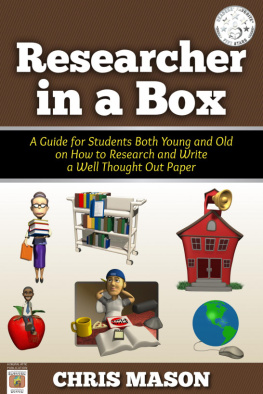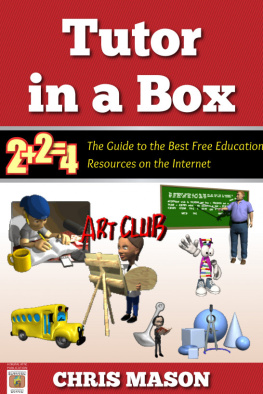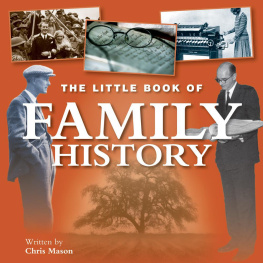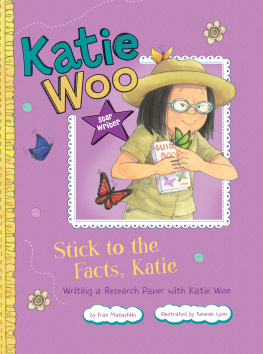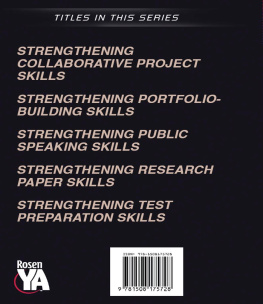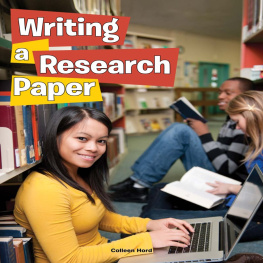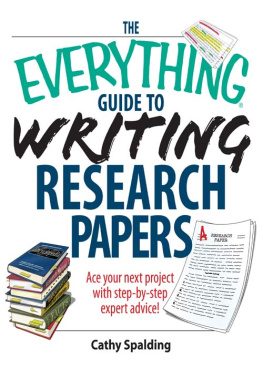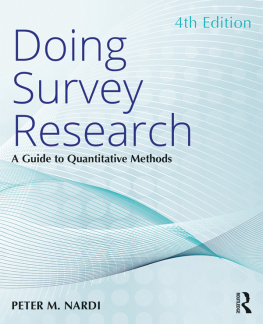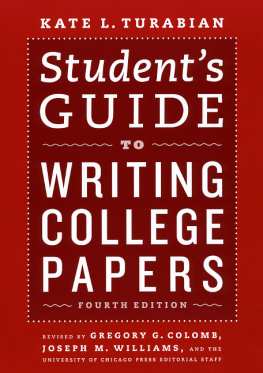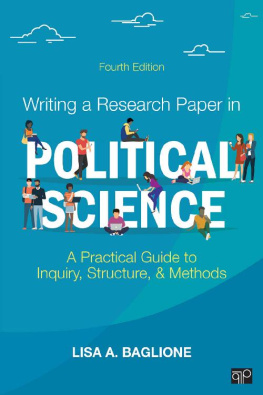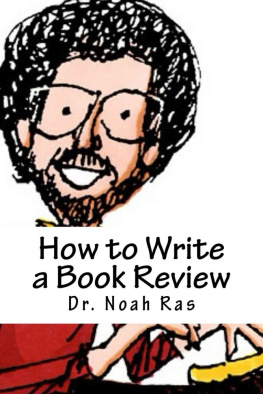Researcher in a Box: A Guide forStudents Both Young and Old on How to Research and Write a WellThought - Out Paper
By Chris Mason
~~~
Smashwords Edition
Copyright 2016 by Chris Mason; All rightsreserved
Contact me at
Smashwords Edition, License Notes
This ebook is licensed for your personal enjoymentonly. This ebook may not be re-sold or given away to other people.If you would like to share this book with another person, pleasepurchase an additional copy for each recipient. If youre readingthis book and did not purchase it, or it was not purchased for youruse only, then please return to your favorite ebook retailer and purchase your own copy. Thank you for respectingthe hard work of this author.
A Digital Attic Publication
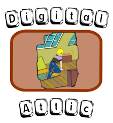
Contents
Why Do INeed This Book If I Have Google?
I get asked this question enough that to behonest, it sometimes bothers me, but here is the answer. Yes, youhave Google, and it is a great tool. Googlehas helped put a world of information at the users fingertips. However, do you as the reader understand howto interpret, analyze , and critique what youread? In my youth, when I was in college, Ihad a job where I would help college students of all ages puttogether research papers and answer any questions they may havehad. I was surprised then as I am now about how little criticalthinking goes on. What is worse is that many people cannot evenanswer the question asked with factual information. The purpose ofthis book is to help students of all ages put their best arguments,ideas and all-round discourse together in a way that is wellthought-out and can withstand scrutiny because there are strongfacts to back up what is communicated.
That was the long answer. The short answer isjust because the reader has access to a calculator, does not makethem well versed in Calculus.
Answering the Question Asked
The first step in any process is tounderstand what is being asked of you. This holds true for all aspects of life. For example, if someone doesnot know what is expected of them on a job ,they will not last long at it. When writing a research paper ordoing a research project, it is important toknow what is expected. If you misunderstand the question, the research will be faulty and the paper willmost likely fall apart.
TheTypes of Research Papers
While the author understands there are many types of research papers, for the scope ofthis book, only those which are most likely to be found in elementary orsecondary school will be covered.
The Compare and ContrastEssay
The compare and contrast essay is probablyone of the most well-known essays. In the essay, the writer isasked for a comparison between two topics, noting as manysimilarities and differences as possible. When given this task,make sure you have enough similarities and differences to do the paper. For example, doing a compare andcontrast on two dog breeds may not work as well as the differencesand similarities between the first-person shooter and the role-playing games in todaysvideo game industry. The second topic has more depth and thereforewould give the writer more points of comparison and be moreinteresting and relatable to most audiences.
Narrative Essay
The narrative essay is a tried and true essay, and most likely the first essaystudents come into contact with. Since this essay is told as astory, as its name implies, the paper is toldin a chronological order most of the time and typically will nothave a thesis statement. Use descriptive words, aka adjectives, soreaders can see pictures in their heads of what they arereading.
The Persuasive Essay
Unlike the other essay types mentioned, the persuasive essay is the only essay to have athesis statement. All essays have a topic sentence to let thereader know what he or she will be reading. However, onlypersuasive essays have thesis statements. This is because only thethesis statement has to be proven with facts. Inthese papers, the writer will try to convincethe reader that the authors position is the correct one. Forexample, are tests a true measure of studentperformance? Does playing video games make children more violent?As people get older, thequestions get more complex, but thefundamentals of proving an argument will be the same. For example,should the minimum wage be raised or is the Electoral College stillnecessary? All the questions previously mentioncould be made into well thought-out papers. It is good toremember if there are no facts, it is not a persuasive essay.
The I nformative Essay
The purpose of theinformative essay, as the title would suggest, is to inform thereader on the topic using factual information and avoiding opinionwhenever possible. Subjects in this area would includehistory-related topics, such as the history of comics or how-todocuments. For example, how to clean a computer infected with avirus. News-related stories should be presented like this, sincethe reader will probably already know bias has infected the mediato plague-like proportions, making it almost impossible for areader to escape being affected by author bias whether from theright or the left, no matter what a person chooses to read.
OtherTypes of Writing
There are two other types of writing thestudent will likely come across. If done right, they are oppositesof the same coin.
The Summary
The summary is where as Joe Friday, from the1950s and 1960s television show Dragnet, would say, Justthe facts, maam. Unless stated by an instructor, a summary shouldavoid opinions whenever possible. Science experiment summaries and newspaper writing are two examples ofsummaries.
The Commentary
The commentary is where the writer can go hogwild with their opinion. Unlike a summary, a commentary is mostlyopinion. A newspaper editorial is a good example of this type ofwriting.
BasicFormat for Writing
When writing an essay, there is a basic layout. Let's quickly go overthe parts.
The Hook
The hook is the attention-getter. This isused to get the readers attention and hopefully keep them reading.In a mystery, for example, thehook might be a sentence that reads, The stillness of thenight was broken by the sound of a gunshot that seemed to echo formiles. In this way, the opening sentence isused to get the reader hooked and wanting to read the rest of thestory. There are three typical hooks the reader could use.
The statistic: The statistic is used toshow the magnitude of something as very large or very small. Forexample, 10,000 people visit Disneyland every day.
The quote: The quote is where the writerwants to set the tone of the paper, for example, if the topic was the importance of fun inlearning, the author of the paper might use the following quote:Education is not filling a bucket but lighting a fire. -WilliamButler Yeats
Fun fact: Sometimes a fun fact is usedbecause it goes with the topic of the paper and is just fun. Forexample, on a paper about vacuum cleaners, theauthor might use the following fun fact: The first vacuum cleanerwas invented by an asthmatic janitor who was trying to prevent hisasthma attacks.
The anecdote: This is a story that helpsillustrate the authors main point.
The I ntroduction
The introduction will more often than notcontain the topic sentence, all the background information and athesis statement, depending on the type of paper being written.Background information is anything that might be needed for thereader to understand the points the author is trying to convey.This could include:
Next page
